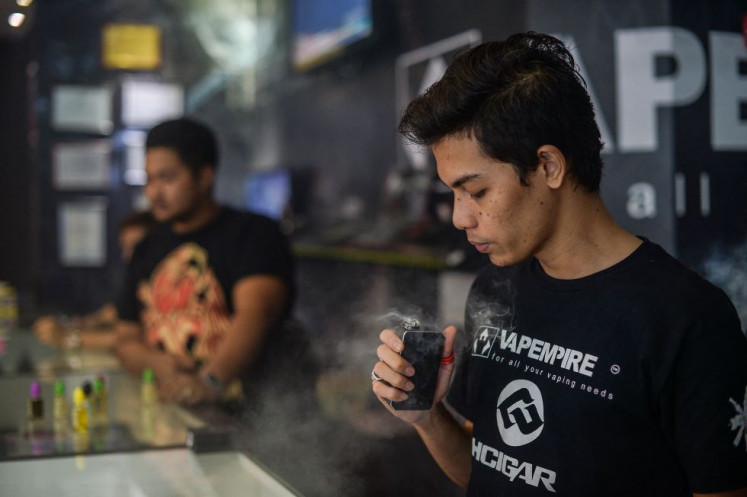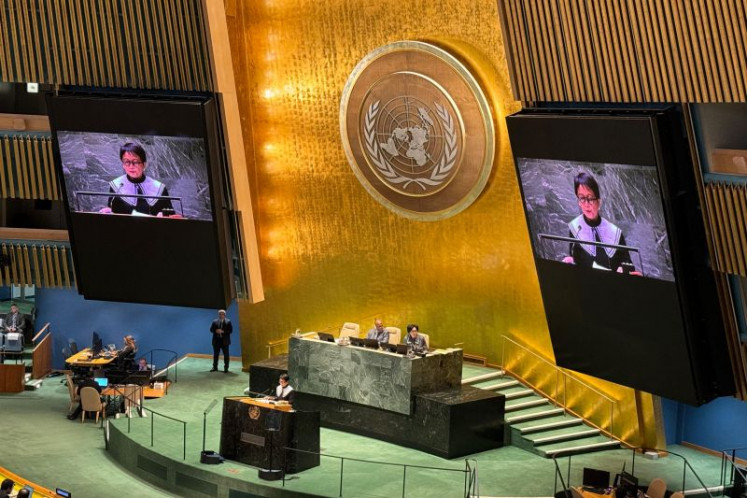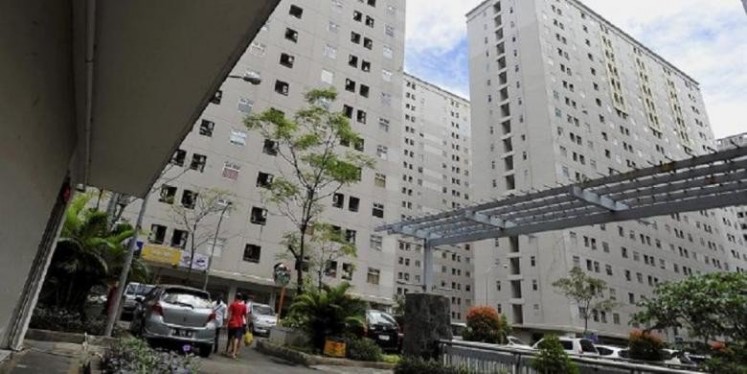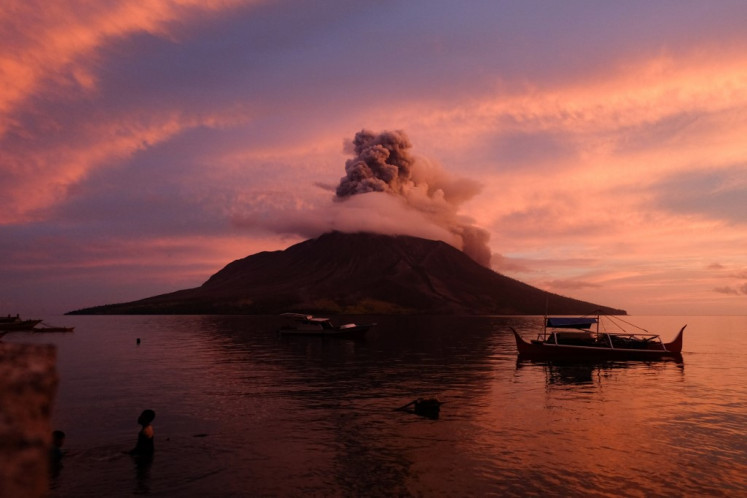Emissions testing will help, but more is needed
Vehicular emissions were the largest source of pollution in Jakarta, contributing 32 to 41 percent to air pollution during the wet season and 42 to 57 percent during the dry season.
Change Size
 Increased enforcement: A Jakarta Environment Agency official tests a car’s emissions at the Blok M bus terminal on Aug. 25, 2023, the same day the city administration began a trial emissions testing period in an effort to curb air pollution.
(Antara/Reno Esnir)
Increased enforcement: A Jakarta Environment Agency official tests a car’s emissions at the Blok M bus terminal on Aug. 25, 2023, the same day the city administration began a trial emissions testing period in an effort to curb air pollution.
(Antara/Reno Esnir)
I
n a scramble to tackle the suffocating air pollution in Jakarta, the city administration has now pushed the pedal further on vehicle emissions testing in the greater metropolitan area.
In the past, a lack of awareness and an absence of sanctions made the tests ineffective. Only time will tell if increased testing can change the game, and more importantly, whether more serious policies will follow.
Since last month the Jakarta administration has been working with the central government and its satellite cities to expand the number of emissions test sites.
New emissions test locations are to be established in Bogor, Bekasi and Depok in West Java and in Tangerang, Banten, as the Jakarta administration looks to enforce stricter emissions controls for each vehicle traveling in the city.
Motorized vehicles, both public and private, are often highlighted as major contributors to the heavy smog choking Jakarta. Indeed, a 2019 study by the Jakarta Environment Agency and global public health organization Vital Strategies said that vehicular emissions were the largest source of pollution in the city, contributing 32 to 41 percent to air pollution during the wet season and 42 to 57 percent during the dry season.
Data from the Jakarta Statistics Agency shows that in 2021, there were 21.8 million motor vehicles in the city, with some 3 million commuters traveling daily, mostly in private vehicles, according to the Jakarta Police. However, fewer than 500,000 vehicles participated in emissions inspections that year, according to data from the city’s Environment Agency.
In 2020, the city administration issued a gubernatorial regulation regarding emissions, requiring motor vehicles more than three years old in Jakarta to undertake annual emissions tests.
Starting in January 2021, a fine was to be imposed on those who failed to comply with the mandatory emissions tests. However, because of the COVID-19 pandemic, the implementation was postponed indefinitely.
The Jakarta administration had intended to instate a similar penalty starting on Nov. 13, 2021, but postponed it again because of a low participation in the emissions inspections and insufficient testing facilities. As of December 2022, only 336 car repair shops and 107 motorcycle workshops have operated inspection facilities.
We support the emissions testing drive as an important part of efforts to solve the long-standing pollution problem.
We also applaud the central government’s move to shut down four of seven units of the Suralaya coal-fired power plant in Cilegon, Banten. Whether the decision originated from concerns about the dangerous pollution levels confronting Jakarta remains to be seen. The capital city hosted the 43rd ASEAN Summit and related summits this week, amid fears about unhealthy air quality.
Consuming around 35,000 tonnes of coal per day to meet 18 percent of the electricity demand of Java and Bali, the Suralaya power plant has been blamed as the largest source of pollution in the Greater Jakarta area.
At least 16 coal-fired power plants encircle the capital and release dangerous fumes and particles that Jakartans inhale every day.
As Jakarta’s air pollution stems from multiple sources, the vehicle emissions test, while a good move, needs supporting policies in other areas.
Phasing out RON 90 fuel and replacing it with higher quality and more environmentally friendly options should be the next move. Government officials have been at odds regarding a plan to remove subsidized RON 90 fuel, known as Pertalite, which is politically sensitive ahead of the February elections.
But other emissions reduction options are available, including the expansion of the traffic restriction policy to include motorcycles, or enforcement of the odd-even license plate policy for a whole day rather than just certain hours.
And while the Greater Jakarta Light Rail Transit (LRT) was recently launched, we are calling on the government to push for drastic improvements to the public transport system in Jakarta, Bogor, Depok, Tangerang and Bekasi.
Decreasing the number of vehicles on the road and only allowing vehicles that produce less emissions will help, but more dramatic public transportation improvements are necessary to achieve a cleaner, greener, city.









